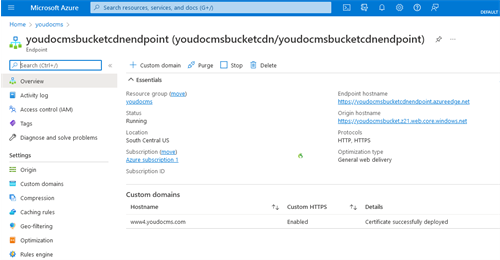Microsoft Azure Custom Domain
Custom Domain
- Go to Settings - Microsoft Azure. In the lower panel enter the prefix for your domain. In our screenshots I am using www4 as the prefix for for testing. Normally you would use www for a live website.
- The CNAME DNS entries are created for you after you enter the prefix. Choose option for refresh domain information. Our application will reply that the domain does not exist on Azure.
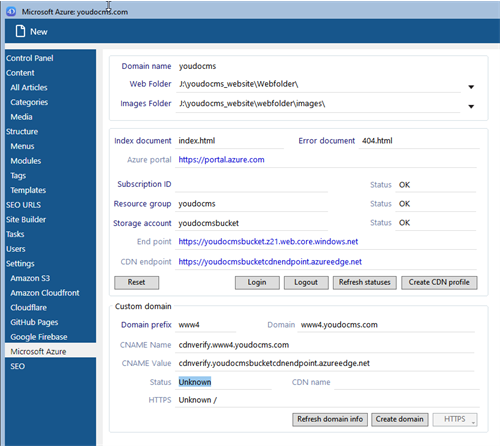
- At this point you need to make the DNS entries with your provider. Create new CNAME entry in your DNS and copy and paste the CNAME and value of the record from file preferences in our application. You cannot proceed until your DNS records have been updated.
- After you have setup your DNS choose the option to create domain. This will link the new domain name with your DNS entry and connect to the CDN endpoints.
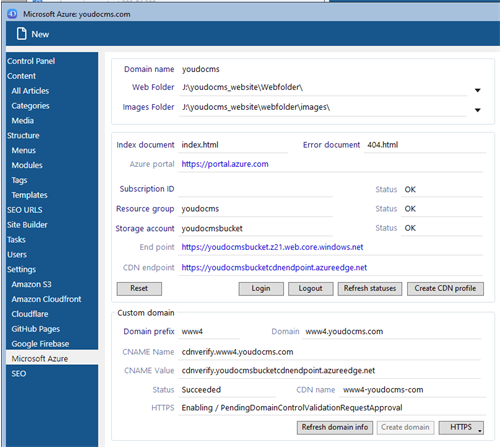
- After the domain has been created you will see a message for succeeded however the SSL certificate has not been issued. HTTPS Is shown as disabled.
- The final step is to use the HTTPS button to enable SLL certificate. This will use the command line interface to inform as your to issue a certificate. After successfully submitting the request you will see the status for HTTPS changes to "submitting the main control validation request". This is not instant and you have to wait for Microsoft to issue the certificate. In our testing the Microsoft system is not the fastest when issuing SSL and can take up to 8 hours before the domain is ready.
Azure Settings
- Navigate to the resource you have just created where you should see the overview page containing three items. The storage account, the CDN profile and the CDN endpoints.
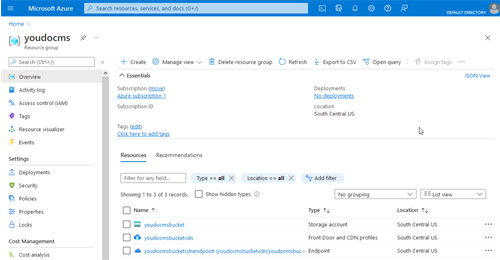
- The storage account is the location where your files will be uploaded when you deploy the site.
- In the left-hand column you will see an option for storage browser. This is blob storage in the Azure cloud and the object containing your deployed files is $web.
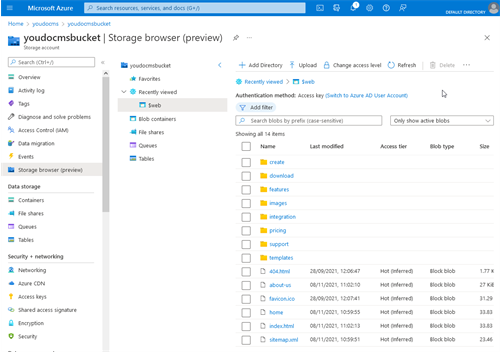
- The CDN profile links the storage account to the CDN endpoint and custom domain.
- The CDN endpoint represents the settings used by the a Web server to serve the pages of your static site. The endpoint has its own azure URL and the custom domain and SSL certificate. If the URL is working and the custom domain is set up with the SSL enabled you are ready to deploy your site.
